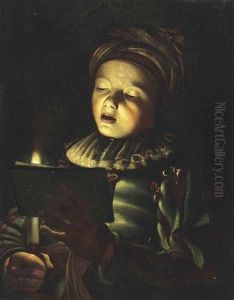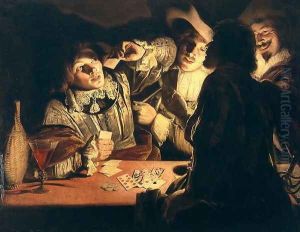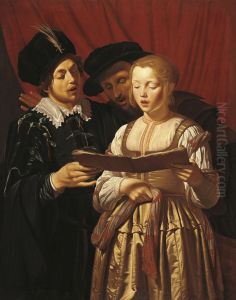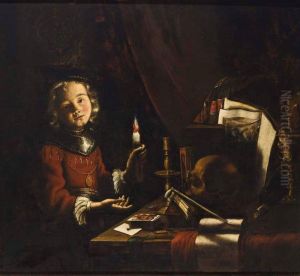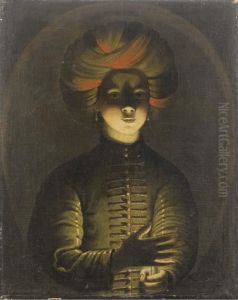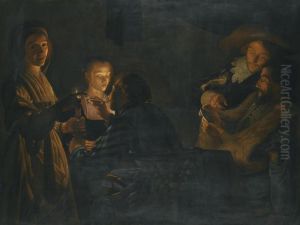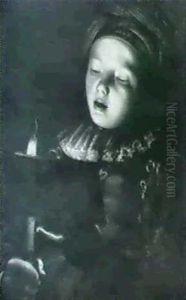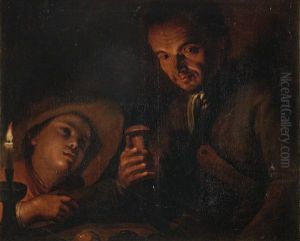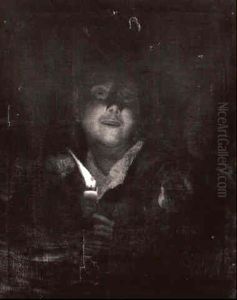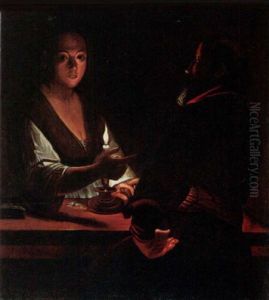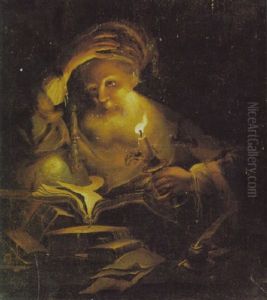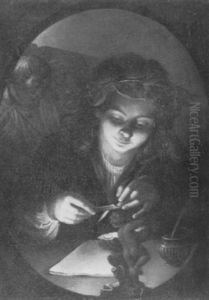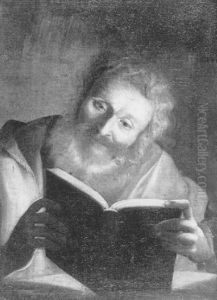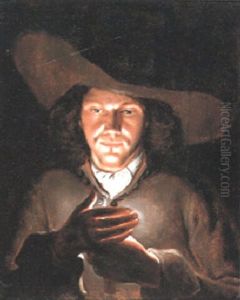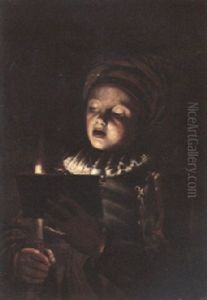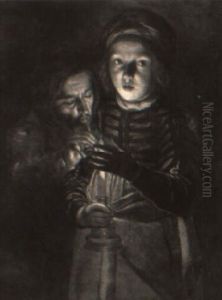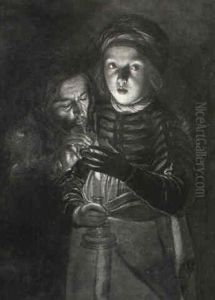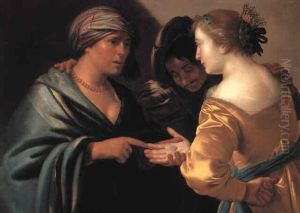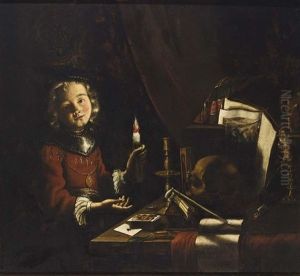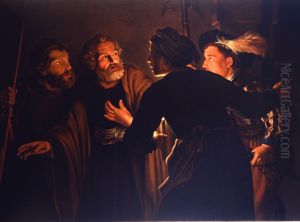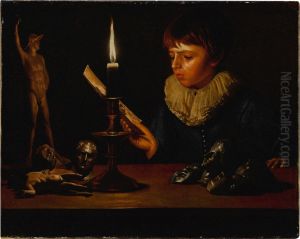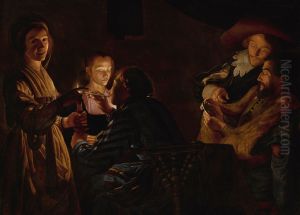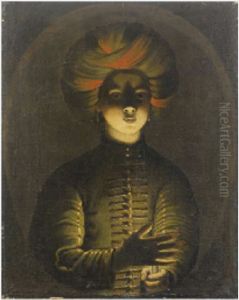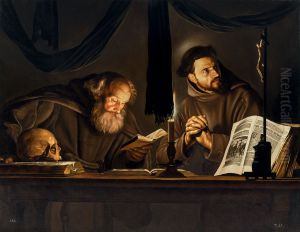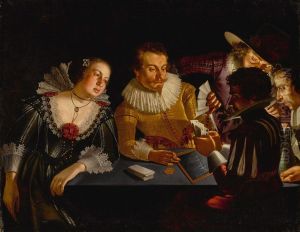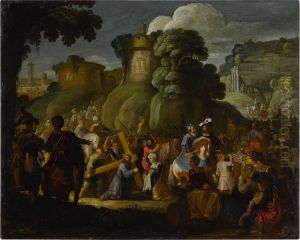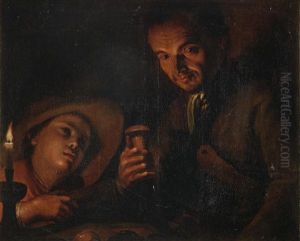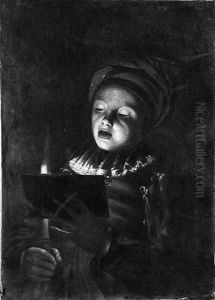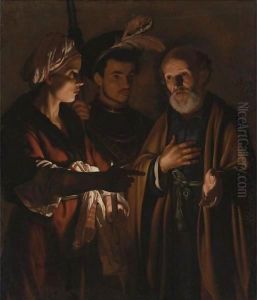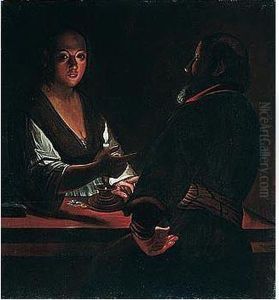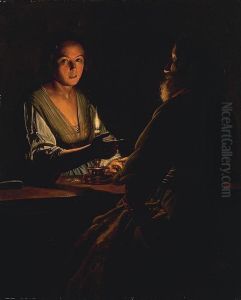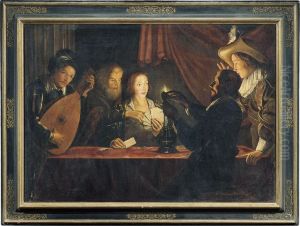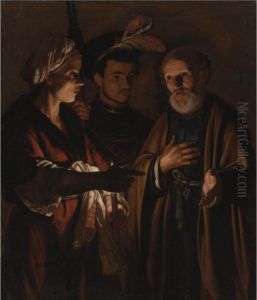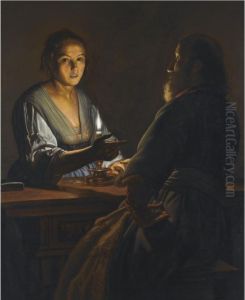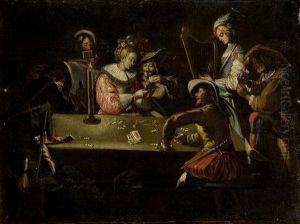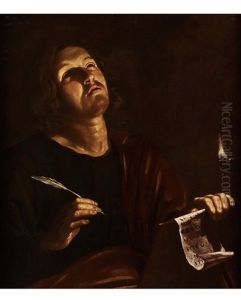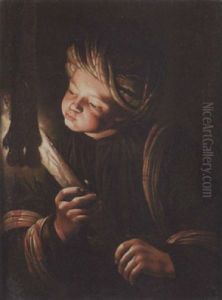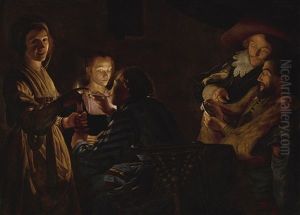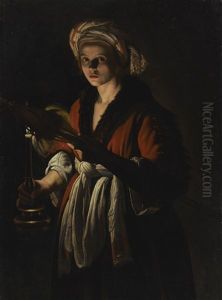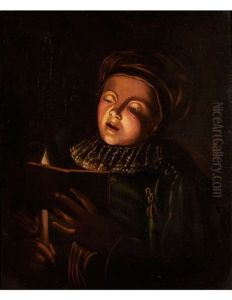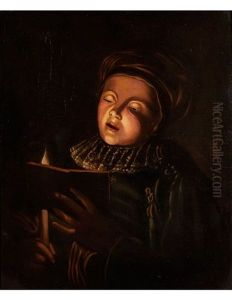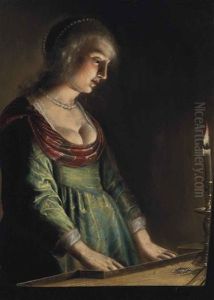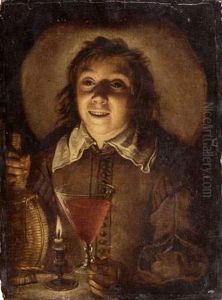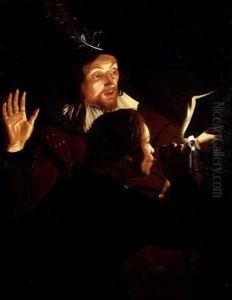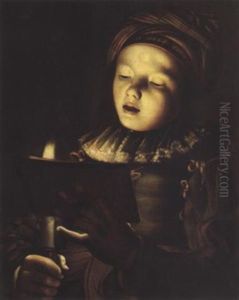Adam de Coster Paintings
Adam de Coster was a Flemish painter who was born in Mechelen (now in modern-day Belgium) in 1586. He was a significant figure in the Baroque period and is particularly known for his mastery in the use of chiaroscuro – the treatment of light and shadow to achieve a sense of volume in modelling three-dimensional objects and figures. De Coster was notably influenced by the works of Caravaggio, and this influence is evident in his dramatic use of lighting and the intensity of his subject matter.
Adam de Coster was not only a follower of Caravaggio but also a prominent member of the Caravaggisti, a group of artists who adopted Caravaggio's style. He spent most of his career in Antwerp, where he became a master in the Guild of St. Luke by 1607. Throughout his career, de Coster was highly regarded for his nocturnal scenes and religious subjects, with his paintings often featuring strong contrasts between light and dark, a technique that Caravaggio pioneered and de Coster adeptly employed.
De Coster's works were mostly composed of genre scenes with a few religious and mythological subjects. His paintings typically depict moments of intimacy and contemplation, with a focus on a small number of figures, which he rendered with great sensitivity and attention to the effects of light. Despite his success during his lifetime, de Coster's work was somewhat overshadowed by other Flemish painters after his death, and he was not as well-known as some of his contemporaries like Peter Paul Rubens.
Adam de Coster passed away in Antwerp in 1643. Over time, his contributions to art have been reassessed, and he is now recognized as an important master of light and shadow in the Baroque era. His works are held in several prominent museums, and his technique continues to be studied and admired for its emotional depth and visual impact.
